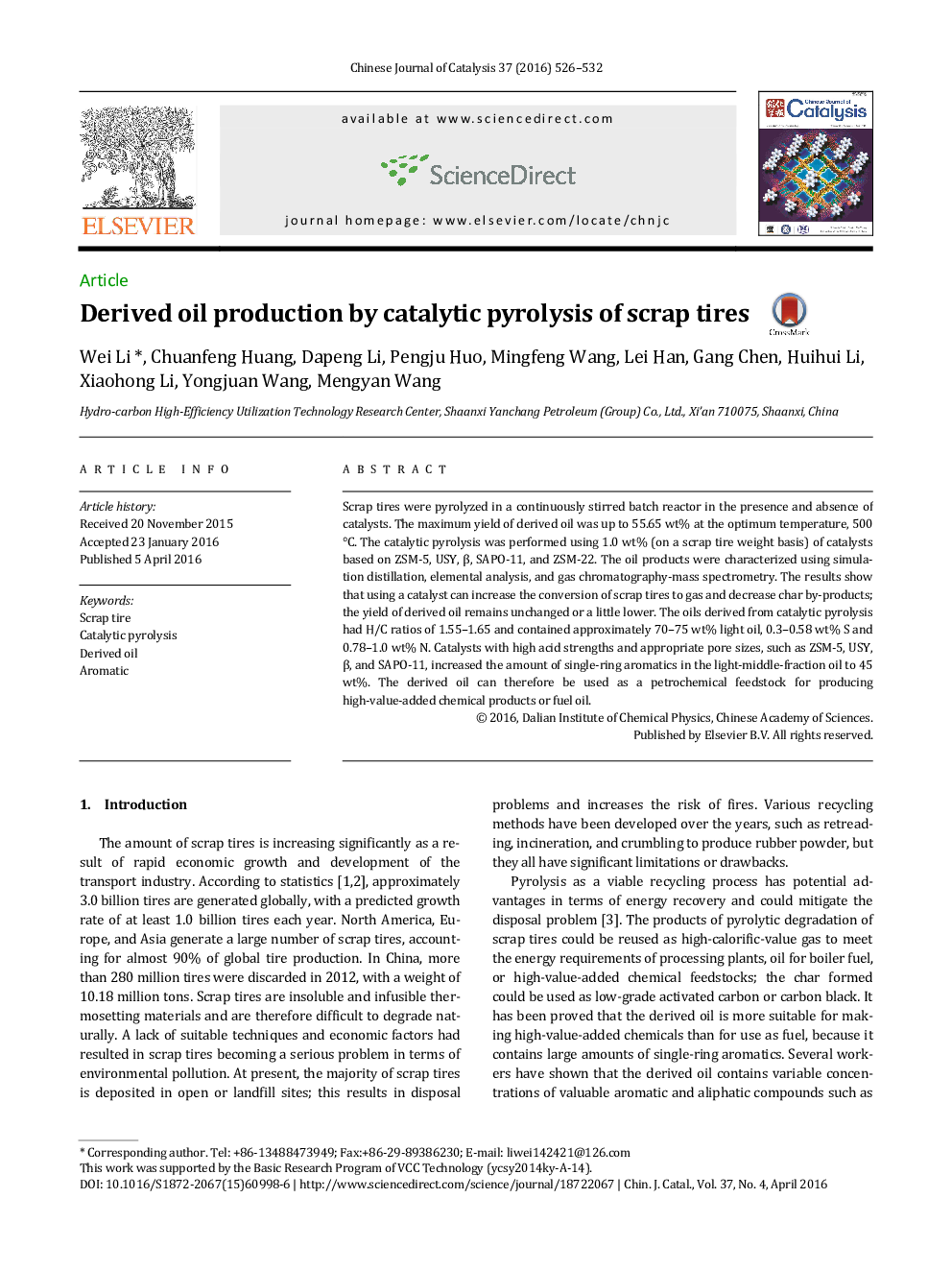| Article ID | Journal | Published Year | Pages | File Type |
|---|---|---|---|---|
| 59149 | Chinese Journal of Catalysis | 2016 | 7 Pages |
Scrap tires were pyrolyzed in a continuously stirred batch reactor in the presence and absence of catalysts. The maximum yield of derived oil was up to 55.65 wt% at the optimum temperature, 500 °C. The catalytic pyrolysis was performed using 1.0 wt% (on a scrap tire weight basis) of catalysts based on ZSM-5, USY, β, SAPO-11, and ZSM-22. The oil products were characterized using simulation distillation, elemental analysis, and gas chromatography-mass spectrometry. The results show that using a catalyst can increase the conversion of scrap tires to gas and decrease char by-products; the yield of derived oil remains unchanged or a little lower. The oils derived from catalytic pyrolysis had H/C ratios of 1.55–1.65 and contained approximately 70–75 wt% light oil, 0.3–0.58 wt% S and 0.78–1.0 wt% N. Catalysts with high acid strengths and appropriate pore sizes, such as ZSM-5, USY, β, and SAPO-11, increased the amount of single-ring aromatics in the light-middle-fraction oil to 45 wt%. The derived oil can therefore be used as a petrochemical feedstock for producing high-value-added chemical products or fuel oil.
Graphical AbstractThermal and catalytic pyrolysis of scrap tires was performed in a continuously stirred batch reactor at various temperatures using different catalysts. The addition of a catalyst significantly increased the yield of light oil and the content of light aromatics in the derived oil from scrap tires.Figure optionsDownload full-size imageDownload as PowerPoint slide
